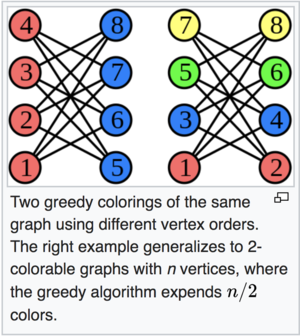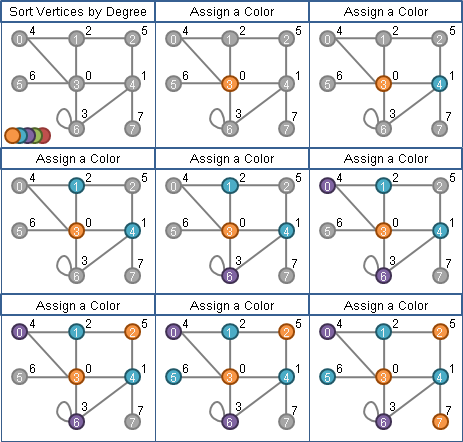Contents
U.S. Senate Committee Meetings Scheduling
The United States of America Senate has 16 standing senate committees which meet on a regular basis. These meeting are extremely important as legislation that gets passed in the Senate often originates in these meetings. Each committee is composed of a collection of senate members with the possibility of overlapping members between the committees. Scheduling these meetings in an efficient manner so that we don’t waste time of the committee members is an important problem that needs to be solved. The optimal solution to this problem will be obtained by scheduling multiple meetings within the same time frame, constrained on having no overlapping members between any two concurrent meetings.
Currently, the nation's 16 committees consists of the following sectors:
- Agriculture, Nutrition, and Forestry
- Appropriations
- Armed Services
- Banking, Housing, and Urban Affairs
- Budget
- Commerce, Science, and Transportation
- Energy and Natural Resources
- Environment and Public Works
- Finance
- Foreign Relations
- Health, Education, Labor, and Pensions
- Homeland Security and Governmental Affairs
- Judiciary
- Rules and Administration
- Small Business and Entrepreneurship
- Veterans' Affairs
Committee Overlaps
Out of the 16 committees there are a total of $ \textstyle\binom {16}2 $= 120 possible committee intersections, i.e. a pair of committees with one or more members belonging to both committees. Thus, these parties cannot hold simultaneous meetings. The current US senate memberships results in a total of 110 committee intersections. The pairs of congressional senates that have no intersections are:
| Committee I | Committee II |
|---|---|
| Agriculture, Nutrition, and Forestry | Foreign Relations |
| Appropriations | Finance |
| Armed Services | Energy and Natural Resources |
| Banking, Housing, and Urban Affairs | Energy and Natural Resources |
| Budget | Energy and Natural Resources |
| Environment and Public Works | Health, Education, Labor, and Pensions |
| Homeland Security and Governmental Affairs | Rules and Administration |
| Homeland Security and Governmental Affairs | Veterans' Affairs |
| Rules and Administration | Small Business and Entrepreneurship |
| Rules and Administration | Veterans' Affairs |
Problem Formulation
The goal of the problem is to minimize the time frame within which all the committees can conduct their meeting. Any intersection between two committees forces the two committees to hold meetings at different time slots. This problem is fairly common, and can be reduced into an Undirected Graph problem called the K-Graph Coloring problem.
Graph Coloring
Graph coloring is nothing but a simple way of labeling graph components such as vertices, edges, and regions under some constraints. For our problem, we will be considering the vertex coloring variation where no two adjacent vertices are colored with the same color. This minimum number of colors that must be used is called the chromatic number. The k-coloring of the graph is an assignment of colors to each vertex that meets the above constraints and uses exactly k distinct colors in the coloring. Finding the minimum value of k such that a coloring exist is the problem of interest to us.
Reducing Scheduling to Graph Coloring The senate committee scheduling problem can be reduced to such a graph coloring problem in the following manner. We construct a graph G with the following properties:
- Each committee is a vertex.
- An edge is placed between two vertices if the corresponding committees share a member.
We can note that if there exists a k-coloring of this graph, the committee meetings can be scheduled using k time slots. We can simply assign each time slot a color and since each vertex is colored, we get a time slot for each vertex i.e. committee. There can be no conflicts since any two committees having the same time slot (color) will not have any common members. Otherwise there would be an edge between the vertices and by the restriction, the coloring is not valid.
Now, we need to find the minimum k. The importance of finding the minimum is shown below in the figure:
This left image is a 2-coloring of the graph while the right image is a 4-coloring of the same graph. Now, if we interpret the graph in the context of our problem, the 2-coloring uses 2 time slots while the right uses 4. In the 4-coloring, while committees 1 and 2 are in a meeting at a time slot red, the remaining committees are sitting idle which is a waste of senator’s time. Scheduling as many meetings as possible in parallel is the goal. Hence, we want to find the minimum value k can take for out committee graph.
Algorithms
The vertex coloring problem is NP-complete. It can be shown by reducing the 3SAT problem to this problem. This means that there is no known polynomial time algorithm for this problem.
Brute-force search for a k-coloring considers each of the kn assignments of k colors to n vertices and checks for each if it is legal. To compute the chromatic number and the chromatic polynomial, this procedure is used for every k=1, …, n-1, impractical for all but the smallest input graphs. In our case of 16 committees, the worst case is if every member is on every committee, which means we would run our algorithm on all values of k from 16 to 1. This would mean in the worst case looking at different colorings which is computationally intractable. We can see that for larger values than 16, this value increases very fast.
We can improve upon this naïve method using backtracking. We assign each vertex a color that does not clash with any of its neighboring vertex’s color and repeat the process until we either finish coloring all vertices or have no valid colors left to assign. This avoids looking at coloring where there is more than one point of conflict significantly improving the run time. This method is still exponentially slow in the worst case and even after several heuristics and optimizations, it is still intractable for large graphs. For the purposes of our problems, however, this method is feasible.
Greedy Solution
In order to deal with the intractable nature of an NP solution, we can choose to relent optimality for improvements in run time. This is the nature of a greedy solution, where we make locally optimal choices at each step, in order to achieve a sufficiently good solution, while not reaching large run times. One such greedy solution for this problem is called the Welsh-Powell Algorithm. The algorithm performs the following basic step in each iteration:
- Choose an uncolored vertex, V with the highest outdegree.
- Look at all its neighbors colorings, and remove the neighbors colors from the candidate colors for the current vertex V.
- Assign V with the lowest indexed color available from the remaining candidate colors.
Since this algorithm makes a local decision for a vertex V at each iteration, it follows a greedy solution. As previously stated, this does not guarantee the optimal solution. However, the runtime of this algorithm is linear in the number of Edges and Quadratic in the number of Vertices, i.e. O(V^2 + E). Thus, giving a solution that can be solved in Polynomial time as opposed to the NP Solution.'
References
Description of Graphs: https://en.wikipedia.org/wiki/Graph_(abstract_data_type)
Graph Coloring: https://en.wikipedia.org/wiki/Graph_coloring
Senate Committees: https://www.senate.gov/pagelayout/committees/d_three_sections_with_teasers/committees_home.htm
Welsh Powell Algorithm: http://graphstream-project.org/doc/Algorithms/Welsh-Powell/
NP - Completeness intro: https://www.geeksforgeeks.org/np-completeness-set-1/
Graph Coloring implementation: https://github.com/MUSoC/Visualization-of-popular-algorithms-in-Python/tree/master/Graph%20Coloring



